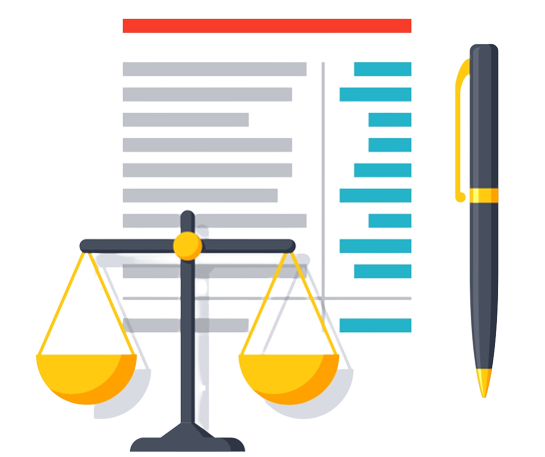Enrich your classroom today with dynamic, engaging activities! Create your free teacher account now.
- Lab
- Lab Details
Budgeting: Mastering Your Money

- Price per Classroom$5 00
- Type Individual Activities
- Duration 2 Hours
- Activities 35
- Grade 7-12
- Ideal For Middle School, High School,
Lab Description
Empowering high school students with budgeting skills is crucial for their future financial well-being. Our comprehensive course goes beyond theoretical knowledge by employing interactive activities to foster practical skills. Students engage in immersive simulations, hands-on exercises that simulate real-life financial scenarios.
The activities include
- Introduction to budget and drag-and-drop activities to categorize expenses.
- Understanding the budget of a person, analyzing pie charts, and answering analytical questions
- Creating a personal budget, setting short and long-term goals
- Analyzing American's average monthly expenses data
- Research activities such as - grocery or restaurant
- Story of Mr. Money Mustache
- Budgeting strategies
- Needs and wants, interactive worksheets on needs & wants
- Comparison shopping, worksheet to compare and contrast three products in different online retailers
- Budgeting for Sarah - students will help their friend Sarah to choose a career, analyze pay stubs, set short- and long-term goals, and finally prepare a budget for Sarah
- Writing a letter to parents explaining the need to budget.
By providing an interactive learning experience, we equip students with the necessary skills to navigate the complexities of personal finance confidently.
Who this course is for
Middle and High school students
Award Ceremony & Certificates
NA
Activities (162 Minutes)
Sub Activities
- Quick Start
Sub Activities
- Review Questions
- Classify Expenses
Sub Activities
- Review Questions
Sub Activities
- Johns Budget
Sub Activities
- Review Questions
- Your Monthly Budget
- Americans' Average Monthly Expenses
- Restaurant or Groceries?
Sub Activities
- Review Questions
Sub Activities
- Review Questions
Sub Activities
- Choose Your Needs &Wants
- How wants will hamper you?
- Review Questions
Sub Activities
- Comparison Shopping
Sub Activities
- Review Questions
- Impact of inflation on expenses
Sub Activities
- Choose a career
- Choose goals
- Plan the budget

- Price per Classroom$5 00
- Type Individual Activities
- Duration 2 Hours
- Activities 35
- Grade 7-12
- Ideal For Middle School, High School,
National Standards in Financial Education
Students will know that Compensation for a job or career can be in the form of wages, salaries, commissions, tips, or bonuses, and may also include contributions to employee benefits, such as health insurance, retirement savings plans, and education reimbursement programs .. Students will use this knowledge to 12-1a . Research potential income and employee benefit packages that are likely to be offered to new employees by various companies, government agencies, or not-for- profit organizations . 12-1b . Explain why people should evaluate employee benefits in addition to wages and salaries when choosing between job and career opportunities . 12-1c . Differentiate between contributory and non-contributory employee benefits . 12-1d . Examine the benefits of participating in employer- sponsored retirement savings plans and healthcare savings plans .
Students will know that Employers generally pay higher wages or salaries to more educated, skilled, and productive workers than to less educated, skilled, and productive workers .. Students will use this knowledge to 12-4a . Identify different types of jobs and careers where wages and salaries depend on a worker’s productivity and skills . 12-4b . Explain why wages or salaries vary among employees in different types of jobs and among workers in the same jobs . 12-4c . Discuss possible explanations for the persistence of race and gender pay gaps .
Students will know that A budget helps people achieve their financial goals by allocating income to necessary and desired spending, saving, and philanthropy .. Students will use this knowledge to 12-1a . Identify their short-term and long-term financial goals . 12-1b . Develop a budget to allocate current income to necessary and desired spending, including estimates for both fixed and variable expenses . 12-1c . Explain methods for adjusting a budget for unexpected expenses or emergencies . 12-1d . Evaluate the advantages of using budgeting tools, such as spreadsheets or apps .
Students will know that Consumer decisions are influenced by the price of products or services, the price of alternatives, the consumer’s budget and preferences, and potential impact on the environment, society, and economy .. Students will use this knowledge to 12-2a . Select a product or service and describe the various factors that may influence a consumer’s purchase decision . 12-2b . Describe a process for making an informed consumer decision . 12-2c . List the positive and negative effects of a recent consumer decision on the environment, society, and the economy .
Students will know that Consumers incur costs and realize benefits when searching for information related to the purchase of goods and services .. Students will use this knowledge to 12-5a . Explain how pre-purchase research encourages consumers to avoid impulse buying . 12-5b . Brainstorm consumer research strategies and resources to use when making purchase decisions . 12-5c . Analyze social media marketing and advertising techniques designed to encourage spending .